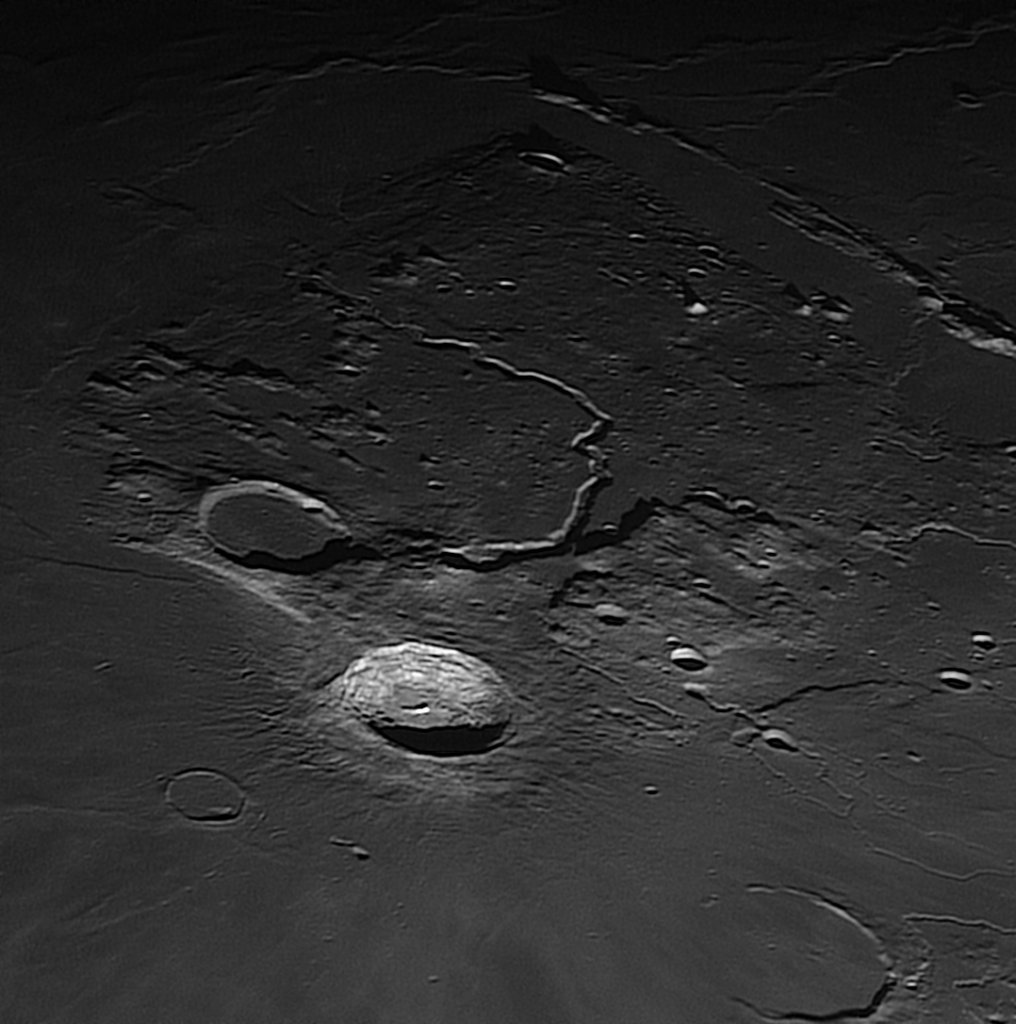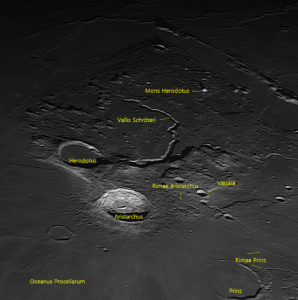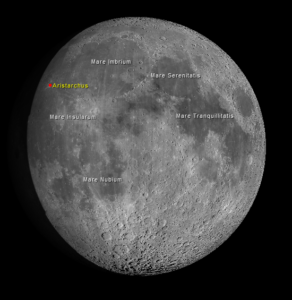Lunar morning skies light up the twenty-five mile wide crater Aristarchus. Because it is one of the more recent impact sites on the Moon it is also one of the brighter. Solar radiation has not have enough time, 450 million years, to darken the ‘recently’ exposed material. Another obvious location is Vallis Schröteri (Schröter’s Valley). This is the longest sinuous rille on the Moon and appears to be an ancient lava channel. In this image it starts in the shadowed 3.7 mile crater just to the right of the crater Herodotus.
The area around Aristarchus has been the site of many ‘transient lunar phenomena’. These are reports of temporary changes in the brightness, color or appearance of objects. Even Apollo 11 astronaut Michel Collins radioed a report verifying German astronomer’s reports of a bright glow in the Aristarchus region. There may be something to the reports as recent lunar spacecraft instruments have detected temporary increases in the radioactive element Radon-222. The half-life of that element is only 3.8 days so the release must have been very recent for the instrument to have detected it during an orbital pass.
Aristarchus is named for the Greek astronomer Aristarchus of Samos(310-230 BC). The crater Herodotus is named for the Greek historian who lived from 484-425 BC. Schröter’s Valley is named after German astronomer Johann Schröter (1745-1816).


